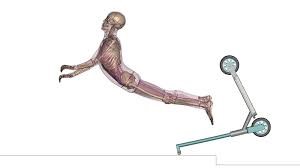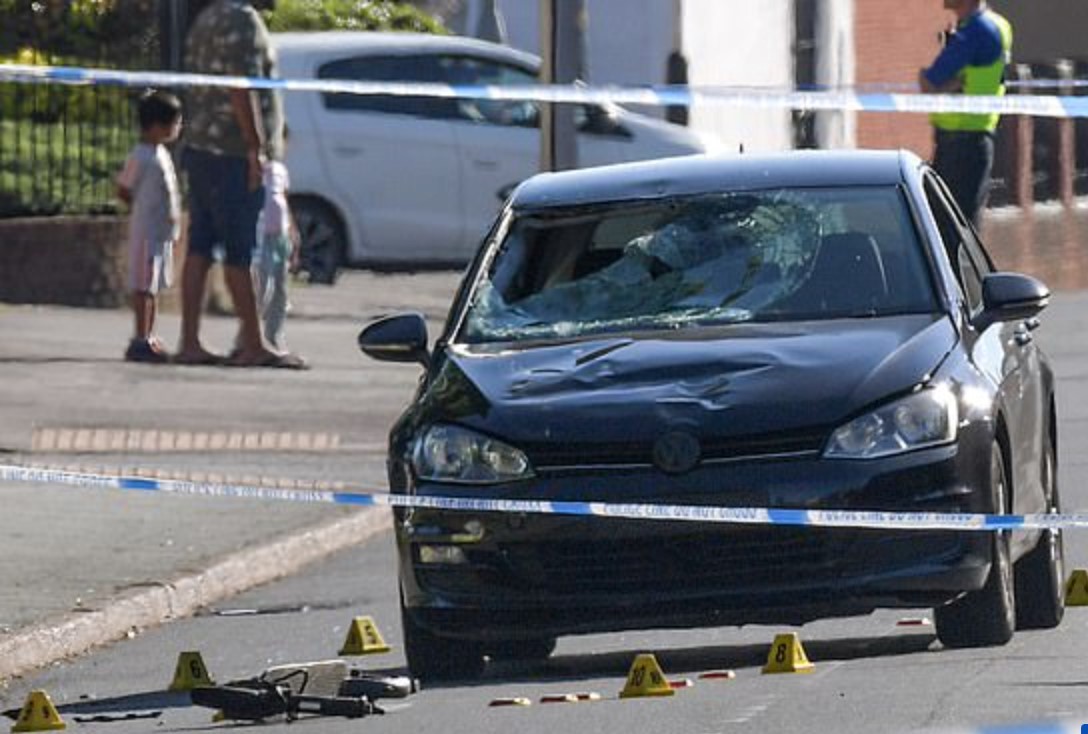Fractures have significant impact on the affected individual, such as a functional deficit, loss of work hours, potential psychological effects and in some cases long term disability. Any e-scooter injured rider will be affected to various degrees depending on the severity of the injury.
Severe e-scooter head injuries may be preventable.
This is key for all of us who use the city streets and may be involved in e-scooter accidents.
The Arthroplasty for Arthritis Charity continues to support the advance of all relevant musculoskeletal research. The Charity has previously supported research in the area of improving the diagnoses of fractures.
The focus of research on e-scooters would be on injury reduction and surveillance.
The number of accidents involving e-scooters, (also known as electric, motorised or electronic scooters) has skyrocketed in the UK.
E-scooter riders have no protection, and this makes them vulnerable to serious often devastating injuries.
Prof Edd Carlton, a Consultant in Accident and Emergency medicine at North Bristol NHS Trust and Associate Professor at the Royal College of Emergency Medicine told the Pacts report: "Across emergency departments in Bristol over 40% of patients who are treated after e-scooter accidents have fractures, and a number also suffer life changing injuries”.
The maximum speed of a rental e-scooter is around 15 mph. Due to the standing position of the rider, with a high centre of gravity, the sensitivity of the e-scooter steering as well as the small diameter wheels and limited braking capacity, e scooter riders are more vulnerable to injuries.
Less than 5% of e-scooter riders wear helmets or protective gear, and there is a strong association between e-scooter use with a predilection for craniofacial and limb injuries.
Around 20% of e-scooter riders suffer head and facial injuries. Upper and lower limb injuries include fractures, dislocations as well soft tissue penetrating wounds.
*Common mechanism of injury of e-scooter riders
A significant of proportion of injured riders (24%) require urgent and emergency surgery, with 60% of riders requiring further secondary care follow-up.
Eleven e-scooter riders were killed in collisions in 2022.
The majority of these injuries affect the common e-scooter rider age group of 18 to 35 year old people.
The simple takeaway message is that head injuries may easily be preventable with the use of a helmet for all these scooter riders at all times.
The health episode cost to the NHS is over £1000 per patient.
A similar impact of e-scooter injuries has been identified on healthcare services in many other countries with an enormous cost to healthcare providers.
E-Scooter rental scheme extended despite concerns
In 2020 the government authorised official trial rental schemes to run trials of e- scooters, which are currently taking place in around 50 areas.
The implications of this mode of transport on injury rates in cities across the United Kingdom is not well publicised or accurate, nor is the impact on the injured riders’ incapacity or the cost to the families, tax-payers and the country.
There is also evidence that the non-fatal e-scooter collisions are often underreported. Incidents are underreported as there is no legal obligation to inform the police of e-scooter collisions and data is further limited by the fact that e-scooters are not a designated vehicle class.
The lack of government legislation is surprising, particularly when over the past 50 years the entire emphasis has been on increased road traffic safety to reduce serious life changing injuries and fatalities.
The financial burden to society and the state is significant and seems to be ignored, even though around 29% of all casualties of collisions now involve e- scooters.
From a trauma surgeon’s perspective, it beggar’s belief that unprotected e-scooter riders are able to ride this mode of transport without adequate protective gear.



